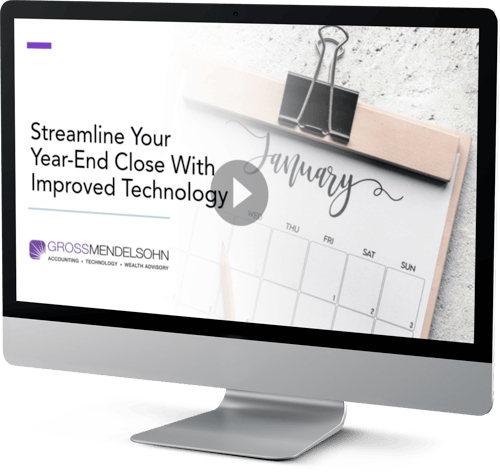Strong vendor relationships are integral to running your business. With that in mind, NetSuite vendor management makes it easy to maintain supplier relationships.
All information related to each vendor is located within a central record, so purchasing managers can easily access relevant data and keep supply chains on track.
NetSuite allows you to provide vendors with an online portal to collaborate, communicate and stay connected to increase efficiency and reduce back-and-forth via email. Not only that, but you can also monitor vendor performance. Every transaction is tracked, analyzed and included in a vendor scorecard, so buyers can easily monitor key performance indicators like defect rate, on-time deliveries and cost.
Let’s dive into vendor management in NetSuite and how your business can get in on the perks.
NetSuite Vendor Management Benefits
When it comes to procurement and maintaining your vendor relationships, NetSuite offers:
- Simplified vendor management
All information related to each supplier is located within its vendor record. - Decreased cost of goods sold (COGS)
With information readily accessible on all items a vendor is supplying, purchasing managers can negotiate better contracts and capitalize on economies of scale. - Risk mitigation
Track the data you need to identify supplier risks — and take the necessary steps to mitigate them before problems arise. - Optimized performance
Using the vendor scorecard, easily keep track of supplier performance. Compare vendors providing like products to identify ways to optimize purchasing.
NetSuite Vendor Management Features
One of the best ways to boost supply chain resilience is to prioritize vendor relationships. NetSuite makes this process effortless for users by increasing visibility and centralizing data.
Vendor Record
With NetSuite CRM vendor records, supplier data is stored in one place — including contact information, contracts, items and pricing, financials and purchasing transactions, outstanding bills, payments, credits and returns, and files and attachments — easing vendor relationship management. With built-in reports, purchasing managers can readily pull together a full picture of a business’s vendors, how much is owed, bills that need to be paid and purchase orders that are outstanding or complete.
Vendor Portal
Launching a project by exchanging emails can quickly become a disorganized process, requiring manual work to extract information from the purchasing manager’s emails and upload it to the vendor record. NetSuite’s vendor portal provides a hub for buyers and suppliers to collaborate on new and existing projects. This not only eliminates email tags, but also keeps all communications, documents and proposals in one place, associated with the correct vendor record.
Vendor Scorecard
Tracking the overall health of your supplier relationships means monitoring items and their pricing, lead times, on-time deliveries, defects, shortages and more. That oversight, and keeping vendors accountable for the products they supply, is easy with the vendor scorecard. Every transaction is tracked, analyzed and recorded, so buyers can easily monitor key performance indicators and provide feedback for continuous improvement.
Multi-Subsidiary Vendor
NetSuite provides the ability to assign a primary and an unlimited number of secondary subsidiaries to a vendor record. When viewing a shared record, the vendor’s total outstanding balance and total unbilled balance — the sum of all the assigned subsidiaries’ balances — are available in the primary subsidiary’s currency. NetSuite maintains a running balance for each vendor based on bills entered and payments made.
Challenges NetSuite Vendor Management Solves
Alleviate these headaches with NetSuite Vendor Management:
- Vendor compliance
Ensure vendors understand and are compliant with regulations and corporate standards. - Vendor management
Centrally store all documents and vendor information for easy access. - Poor supplier performance
Use simple workflows and the vendor scorecard to effectively monitor the supplier KPIs that matter to your company. - Lack of communication
Improve collaboration between you and your vendors and avoid costly errors stemming from miscommunications.
Enabling the Vendor Access Feature
Enabling the “Vendor Access” allows you to give vendors access to NetSuite and assign roles to them. You can assign multiple roles to customize the level of access needed by a specific vendor. For example, the Vendor Center role enables a vendor to view prior transactions and open purchase orders.
To enable the “Vendor Access” feature:
- Go to Setup > Company > Enable Features
- Click the Web Presence subtab
- Check the Vendor Access box
- Click Save
The Vendor Center Role
The Vendor Center role in NetSuite gives your vendors access to view, search and print purchase orders you place with them. Vendors can reference purchase orders on their own to answer questions, and view order and payment history as needed. For information about managing roles for your vendors, see Assigning a Role to a Vendor.
Vendors assigned as resources on projects can also use the Vendor Center to enter time worked on projects.
If you use NetSuite OneWorld and a shared vendor record, the vendor can work with transactions associated with these subsidiaries in the Vendor Center. For more information about globally shared vendor records, see Assigning Subsidiaries to a Vendor.
To permit vendors access to NetSuite, complete the following steps:
- Enable the Vendor Access feature
- Assign the Vendor Center role to your vendor
- Access to your NetSuite account allows your vendors to view your purchase orders
Need Help?
Our Technology Solutions Group includes a team of experienced solution experts who will work with you to understand and address the specific needs of your business. If you’d like to improve your organization's vendor management, contact us online or give us a call at 410.685.5512.


